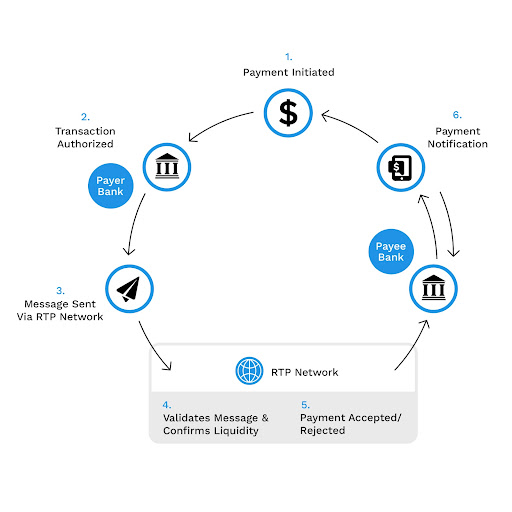Banks and financial institutions face many challenges in their operations. One of the most prominent challenges is the know-your-customer (KYC) process. This process helps organizations determine who they're able to provide services for, prevents risks from those committing fraud, and ensures that the institution remains compliant with local and international regulations.
The KYC process can be incredibly time-consuming, requires many resources, and can come at a significant cost, which often creates obstacles to customer onboarding. At the same time, any errors throughout the process can be costly, delay customer onboarding, and create issues further down the line for the organization. And this is just for onboarding! KYC continues beyond this into monitoring for suspicious activity.
KYC automation is key for banks and organizations to overcome these obstacles. According to Polaris 2022 Market Research, automation in electronic KYC (eKYC) was worth $447.53 million in 2021 and is expected to grow at a compound annual growth rate of 22% between 2022 to 2029. Financial organizations are understanding the importance of KYC automation and the competitive advantage it offers them.

Common Challenges in KYC
With so many moving parts to the KYC process, various challenges arise as the operation advances. To begin with, organizations request applicants to provide information regarding their identity along with their financial activity. The applicant submits the documents to the bank which, depending on the bank, can be done offline or online.
From there, the firm's employees manually check the customer's documents to confirm their accuracy and then transcribe the information into a database. Given how many documents are required, it is a lengthy process from start to end, often requiring more documentation than what was presented above. If there are any errors or if changes need to be made, this can further delay the process.
Finally, the firm continues to monitor for suspicious activity.
This is a high-level overview of the KYC process and its inherent challenges, including:
Significant Spending
The first issue is that this process is costly. According to a LexisNexis Risk Solutions 2022 study, the total cost of financial crime compliance across financial institutions rose significantly, from $213.9 billion in 2020 to $274.1 billion in 2022.
Time-Consuming Processes
Due to the many steps that are required, the KYC process takes a significant amount of time, especially with manual processes involved. While manually inputting data into a database could take hours, KYC automation completes the task within minutes and sometimes seconds.
Inaccuracies
As the saying goes, “to err is human.” Humans make errors and, unfortunately, it can lead to many issues, from delayed processing to non-compliance. All it would take is inputting one missing letter or number for the identity to be captured incorrectly. At the same time, employees typically inspect multiple client documents at a time for many different clients which could increase the potential for human error.
Lack of Security
Physical documents are typically less secure than digital documents. Physical documents are passed from hand to hand, need to be stored properly, and need to be handled with care. However, with manual processes, none of this can be guaranteed.
Changing Regulations
With the regulations for anti-money laundering (AML) and counter-terrorist financing expanding or changing, financial organizations face pressure to stay up to date and remain compliant. At the same time, these institutions need to ensure that they maintain a smooth and optimized client onboarding experience, or else they may provide poor customer service. It is a delicate balance.

KYC Automation to the Rescue
Automation benefits many areas of the KYC process. Since the majority of the process involves repetitive tasks, data entry, and documents, automation excels in KYC. Technologies such as robotic process automation and artificial intelligence possess the capabilities to collect many data points into a single source, identify any inaccuracies within documents, flag items, and more. AI also can monitor customer transactions in real time and flag any possible suspicious activity. KYC automation improves the verification process by extracting the data and inputting it into the organization's database while also comparing the documents to ensure accuracy and authenticity.
There are many benefits to adding technology to the KYC process. The obvious benefits that we’ve already touched on include improved efficiency and cost savings, but there are more benefits to consider.
Making the process more efficient by adding automation has downstream effects and one of those is improving client relationships. Whereas a manual process can take up to 60 days, automation cuts that time down significantly and creates a smoother process for onboarding the customer. This provides the customer with a better experience and helps the organization to remain competitive.
Another downstream effect is reallocating resources. Manuel KYC processes require a significant amount of employees to sift through and verify the documents. With KYC automation, businesses can reallocate resources where they would be better needed to not only improve the KYC process but other processes in the company.
Finally, companies experience immediate savings that come with automating the KYC process, including reallocating resources and accelerating the process. However, there are also long-term savings to consider. With the reduced risk of fines due to improved compliance, companies will find that they spend less all around. So it's not just immediate savings, but continued savings in the long term.

Implementing Digital Transformation in KYC
Exela’s KYC/AML Platform elevates KYC/AML solutions by using both physical documents and digital footprints, also known as Social KYC. Social KYC is a risk-based approach to KYC/AML compliance for digital-first businesses. Through our platform, users verify customers’ identities using their unique digital footprint and online social media identities.
Our platform extracts information from over 80,000 sources, including news, publications, social media, watchlists, public records, proprietary datasets, and open websites. Then, it aggregates individual information to create a robust customer profile for enhanced KYC/AML operations. A single dashboard provides real-time visibility into each stage of the customer onboarding process.
The platform also automates transaction and account monitoring to provide real-time fraud detection and risk monitoring. A closed-loop system architecture enables continuous improvement over time as the system interacts with more cases and a larger data set. The system sends out notifications and alerts, flagging relevant accounts for teams to investigate.
Reduce processing times, errors, and operating costs while accelerating customer onboarding and streamlining document management with our KYC/AML Solution. Enhance your processes with the right KYC solution. Contact us today for more information.










